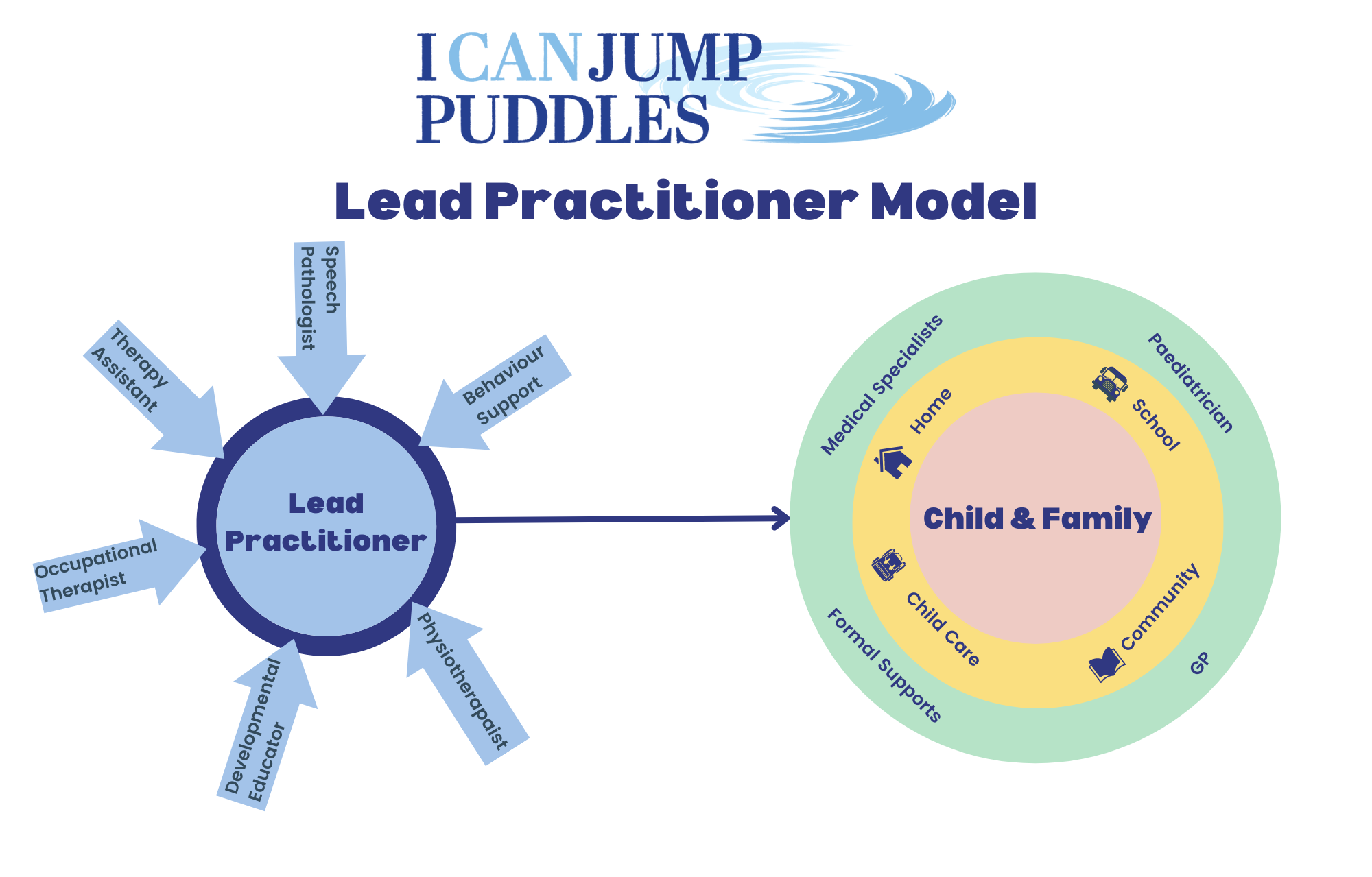Lead Practitioner Approach: Building Capacity with Consistent Support
The Challenge: Juggling Multiple Support Services
Imagine needing help for your child who has sensory processing difficulties. You might require an Occupational Therapist (OT) to assist with self-regulation at home and school. But what if there are also concerns about swallowing during meals? Now you need a Speech Therapist as well. Suddenly, you’re navigating consultations and coordinating support from various professionals.
The Lead Practitioner Approach: A Streamlined Solution
The Lead Practitioner Approach offers a different way. It utilizes a trans-disciplinary team with a designated Lead Practitioner as your primary point of contact. This practitioner, often matched to your specific needs (like an OT in our example), becomes your central support system.
Benefits of the Lead Practitioner Approach
- Builds Trust and Consistency: Having one main contact fosters a strong, trusting relationship. The Lead Practitioner gets to know you and your child well, leading to more effective support.
- Seamless Collaboration: The Lead Practitioner works within a trans-disciplinary team. If additional expertise is needed, like a Speech Therapist in our example, the Lead Practitioner seamlessly integrates their support for a holistic approach.
- Empowering You: Our “3 E’s” practice principles – Everyday life support, Expertise recognition, and Empowerment – ensure the Lead Practitioner works within your routine and recognizes you as the expert on your child. The goal is to empower you with the skills to manage challenges independently. See our what our 3E’s are all about here.
How Does it Work?
- Initial Assessment: The Lead Practitioner works with you to identify your goals and priorities.
- Ongoing Support: The Lead Practitioner delivers support based on your goals, utilizing the “3 E’s” principles.
- Collaboration for Additional Needs: If other specialists are required, the Lead Practitioner consults and coordinates their involvement. This ensures a unified approach and avoids juggling multiple professionals. See what ICJP professionals can do to help with your goals here.
- Focus on Long-Term Independence: The Lead Practitioner equips you with the skills and knowledge to manage challenges independently, reducing ongoing support needs.
The Lead Practitioner Approach: Aligning with Best Practices in Early Childhood Intervention
The Lead Practitioner Approach isn’t just effective, it aligns perfectly with the National Guidelines for Best Practice in Early Childhood Intervention established by ECIA [ECIA source not found]. Here’s how:
- Family-Centered Care: The Lead Practitioner fosters a strong relationship with the family, building trust and ensuring their priorities and goals are central to the intervention plan.
- Respecting Diversity: The Lead Practitioner works within the family’s cultural background and respects their values and beliefs.
- Community Participation: Support is delivered within the family’s everyday routine, ensuring the child can participate meaningfully in their home and community life.
- Learning Through Everyday Activities: The Lead Practitioner utilises the “3 E’s” approach, specifically supporting the child’s development through everyday experiences.
- Teamwork with a Key Worker (Lead Practitioner): The Lead Practitioner acts as the key worker, coordinating the trans-disciplinary team and ensuring clear communication with the family.
- Empowering Families: By building the family’s capacity and knowledge, the Lead Practitioner empowers them to support their child’s development independently.
- Goal-Oriented Intervention: The Lead Practitioner works collaboratively with the family to establish goals and ensure the intervention aligns with their desires for their child.
- Evidence-Based Practices: The Lead Practitioner utilizes their expertise and collaborates with other qualified professionals, ensuring interventions are based on sound research.
The Lead Practitioner Approach goes beyond simply providing support; it fosters a collaborative environment that empowers families and strengthens their ability to help their children thrive. This aligns perfectly with the core principles of best practices in Early Childhood Intervention, making it a valuable tool for professionals working with young children and their families.
At ICJP, we believe the Lead Practitioner Approach empowers individuals and families to build capacity and thrive.

